I'm trying to detect a whole note and a half note, but for the half note, it seems that I couldn't detect it, as it is a hollowed circle. Is there a way to detect the hollowed circle?
Here is my code:
#include "opencv2/opencv.hpp"
using namespace cv;
using namespace std;
int main(int argc, char** argv)
{
// Read image
Mat im = imread("beethoven_ode_to_joy.jpg", IMREAD_GRAYSCALE);
// Setup SimpleBlobDetector parameters.
SimpleBlobDetector::Params params;
// Change thresholds
params.minThreshold = 10;
params.maxThreshold = 200;
// Filter by Area.
params.filterByArea = true;
params.minArea = 15;
// Filter by Circularity
params.filterByCircularity = true;
params.minCircularity = 0.1;
// Filter by Convexity
params.filterByConvexity = true;
params.minConvexity = 0.01;
// Filter by Inertia
params.filterByInertia = true;
params.minInertiaRatio = 0.01;
// Storage for blobs
vector<KeyPoint> keypoints;
#if CV_MAJOR_VERSION < 3 // If you are using OpenCV 2
// Set up detector with params
SimpleBlobDetector detector(params);
// Detect blobs
detector.detect(im, keypoints);
#else
// Set up detector with params
Ptr<SimpleBlobDetector> detector = SimpleBlobDetector::create(params);
// Detect blobs
detector->detect(im, keypoints);
#endif
// Draw detected blobs as red circles.
// DrawMatchesFlags::DRAW_RICH_KEYPOINTS flag ensures
// the size of the circle corresponds to the size of blob
Mat im_with_keypoints;
drawKeypoints(im, keypoints, im_with_keypoints, Scalar(0, 0, 255), DrawMatchesFlags::DRAW_RICH_KEYPOINTS);
// Show blobs
imshow("keypoints", im_with_keypoints);
imwrite("a.jpg", im_with_keypoints);
waitKey(0);
}
